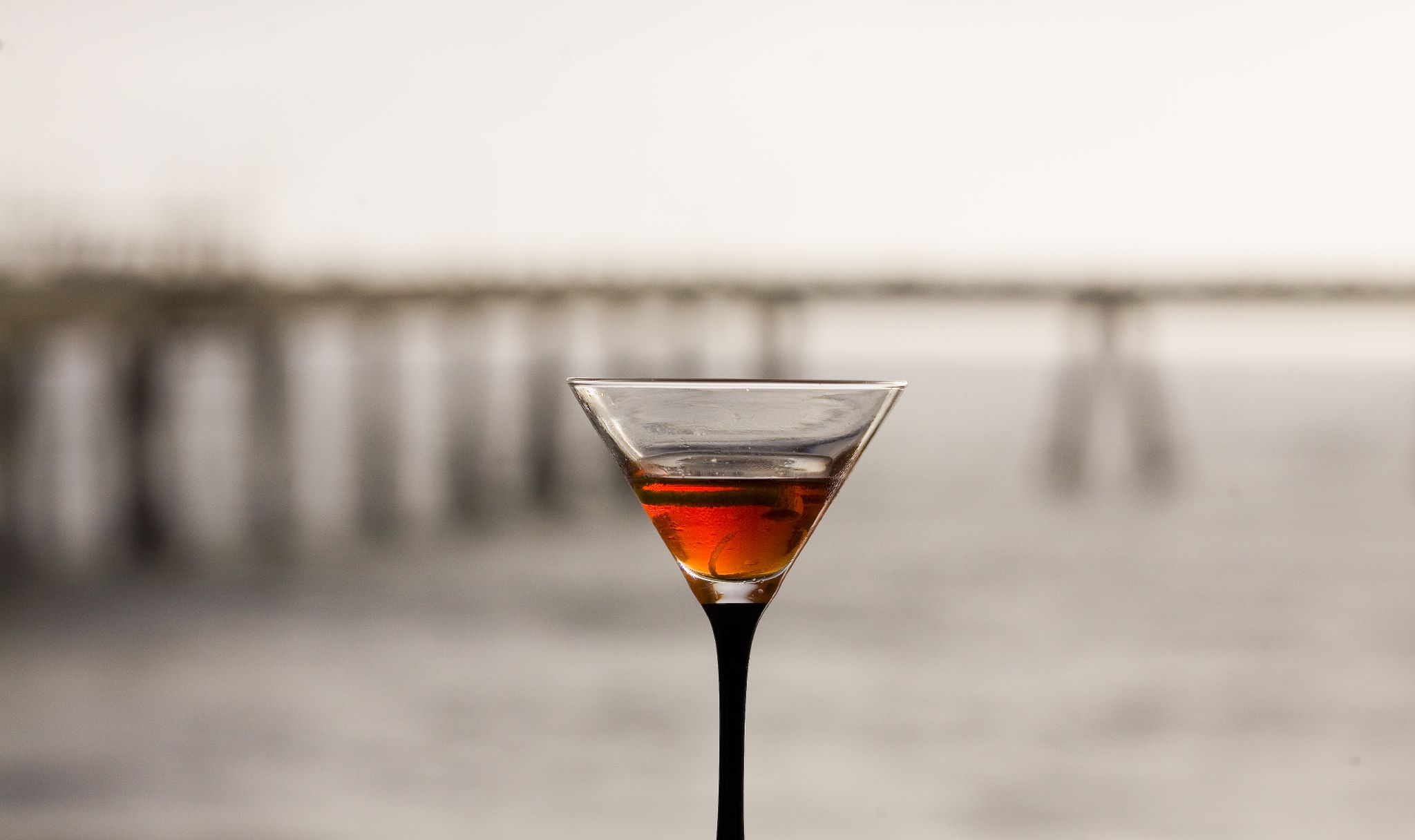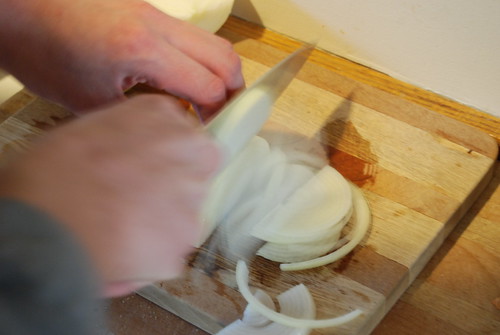I'm not going to lie—I know a lot of you know how to cook already, and that's wonderful. It's my aim to address you and the kitchen neophytes with equal accessibility, and to that end, I'd like to talk about a few kitchen essentials before I plunge into making posts about food.
Equipment that I cannot survive without in the Kitchen:
A Good Knife. I use a French Knife, which you might know as a generic chef's knife. You might prefer a santoku-style blade—they're good too, and several of my colleagues swear by them, but I like the curve and line of a French Knife better, for myself. I keep it very sharp by taking it to a sharpening stone once or twice a month, sometimes more often if I've been working with a lot of tough items, bones, or the like. Every time I use it—before and after—I take it to a honing steel. When a knife does at least 75% of your cutting, you want to take good care of it. Other knives of note, especially for some things I'm going to do in the future here: A
flexible boning knife and a
cimeter (pronounced scimitar, like the sword.) These are essential for fabricating meat and poultry, which I think is a lot of fun. A
paring knife is, in my opinion, the least-important-but-still-essential knife. I have big hands, I can use an 8" french knife for most of my fine work—but sometimes you need to cut a small item and do it finely, and so I'll get out a paring knife to do it. They're also great utility knives in the kitchen, for when you need to cut open a plastic bag, peel an onion, make a strawberry fan... whatever. Most of the people I've worked with set out three things when they get ready in the morning: A chef's knife, a paring knife, and a peeler. With those, 99% of the work gets done.
 |
| Top-Bottom: Cimeter, Boning Knife, Paring Knife, French Knife. |
Good Cookware. I like heavy-bottomed stainless steel pots. Heavy-bottomed is the important part, honestly. The lighter your cookware, the thinner the material, and the more likely it is to warp and become unbalanced on your cooktop—and when that happens, you're going to lose some food eventually. It'll probably happen during your biggest dinner party ever, and you'll hate yourself and everyone in the world. I speak from experience on this.
You'll particularly want to have:
- A stockpot, somewhere around 8 quarts. I have a 16-quart, because I like making large quantities of soups and stews and stocks, but I most commonly use my 8-quart pots for everyday cooking.
- A sauté pan with curved sides (called a sauteuse,) between 8-12" in diameter. I have cooked with 10" sauté pans for a long time, and they're comfortable for me. They move easily (they're not too big) and they hold enough food to prepare one or two portions at a time (they're not too small.)
- A sauté pan with high, straight sides (called a sautoir,) of a larger size—I have a 14" one that makes a lot of my pasta sauces, sautéed vegetables, and pretty much anything I need to make in large quantity.
- A saucepan of 2-4 quart capacity. You never realize how many things you need to heat up, or blanch, and so on.
- A roasting pan. There's many varieties, the main similarity being high sides. Get one that you can fit in your oven, move around well, and clean in your sink—those are the main concerns here, honestly.
For many of the recipes here, you'll be good with those few things. For others, I'll refer to a lot of different pieces of equipment, and when I do I'll try to make a good explanation of them.
Things I like to have in the kitchen food-wise include:
Salt. When a recipe says "Season" it means use salt, even if salt wasn't called for in the recipe. Salt brings out flavors, makes things taste richer and more like themselves, and serves many other functions in the kitchen, too. Sprinkled on a floor, it can help to clear out an oil slick by breaking down the oil more quickly. Packed around a sausage casing, it keeps it from going bad. Salt is used in pickling brines and meat brines. It's even used to help scrub cast-iron pots and pans clean. Get a big box of kosher salt, and marvel at how quickly you'll use it.
Olive oil and Butter. Between these two fats, I can cook anything and have it taste good. Butter is essential for roux, and for getting good color on sautéed foods. Olive oil makes many dishes richer and gives more flavor notes, it's great in salad dressing, and I personally love to take a spoonful of it straight now and then.
Shallots. Anthony Bourdain talks about shallots in his book
Kitchen Confidential, saying "Shallots are one of the things—a basic prep item in every mise-en-place—which make restaurant food taste different from your food," and I agree with him. Shallots seem inconsequential, but they add another layer of flavor to sauces, they give a
je ne sais quoi to sautéed items, and they're really nice in salad dressings too. These go along with, not in substitution for,
onions and
garlic. Get different varieties and explore.
Tea. Stereotypical Steampunk, right? I love tea, it's an incredible beverage and the varieties available are mind-boggling—it's also edible. A friend likes to snack on dry tea leaves from time to time. I haven't quite gotten to that point, but I do like to cook with tea. From infusing rice to making Earl Gray Shortbread, tea has many uses in the kitchen beyond stimulating the cook. I'll address some specific teas and their uses as the blog continues.
Stock, also known colloquially as
broth even though they're different, speaking in a pedantic sense. (Stock is made primarily from bones, while broth is the result of cooking meat that will later be eaten.) Making your own stock is simple and cheap, and rewarding. Chicken stock and beef stock will be your most frequently-used types (unless you're vegetarian.)
What, then, can one use to make the cooking more
steampunk? It comes down to an understanding of the nature of Steampunk cookery. Some ideas that I'll be exploring:
Pressure Cookers. A boiler uses pressurized steam to move the pistons and wheels, and create mechanical energy. Why not cook with pressure?
Smokers. Smoke is an essential part of the Steampunk world. Why not use smoke to cook?
Steaming. Steamed vegetables are old hat. Chinese cooking has long used steamers to cook food, from filled dumplings and buns to vegetables. Steaming is an excellent way to cook food, it preserves a lot of the nutrients that are in vegetables, and can keep food delicate through a long period of time.
So, with all that said... enjoy. Friday should hold a recipe for all of you to enjoy.






















